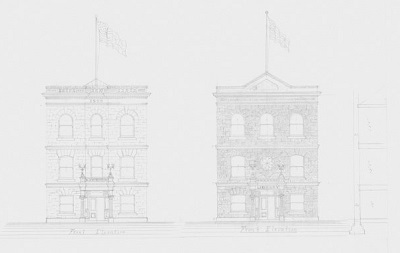American Archives Month
Backstage Pass: Blueprints Collection
by Cathy Salomon, volunteer
One of the neat collections we have that many people don’t know about is our blueprints. For more than a year now, volunteer Cathy Salomon has been sorting, reorganizing, preserving, digitizing, and cataloguing our blueprints created by famed local architect Luther Turton. This is how Cathy works her magic:
“We have 10 file drawers of donated architectural diagrams which were only loosely organized. About half come from the offices of Luther Turton, who designed many buildings in Napa and surrounding counties from the late 1880s through the 1920s. I am cataloging and digitizing these beautifully detailed drawings, many of which are quite large and include ink and pencil drawings on various types of paper and traditional blueprints.
“The digital images are a form of preservation because the paper copies can fade, rip, discolor or otherwise be destroyed; the digital images can be used to create printed copies; they can be viewed without handling the fragile originals; and the images can be displayed on our website as part of the catalog entry for each building.
“The first thing I do when working with these drawings is to identify a set of drawings that pertain to a single building and remove any staples or other fasteners so the individual pages can be scanned. I then enter information about each set of drawings into our catalog so that Library staff or our patrons can find them. Sometimes this takes a little detective work because Turton’s drawings generally don’t indicate the address of the building but rather the name of the client and sometimes a town or city. Sometimes the drawings are dated but the date may only appear on one of multiple pages or on the drawing of the building itself, or not at all.
“Next, I bring the drawings to local architect’s office which has generously donated the use of a special large scale scanner which can handle the fragile sheets of paper and create the digital images of the drawings. Finally, I “attach” the digital images to the catalog entries and then store the original drawings in archival quality folders.”


